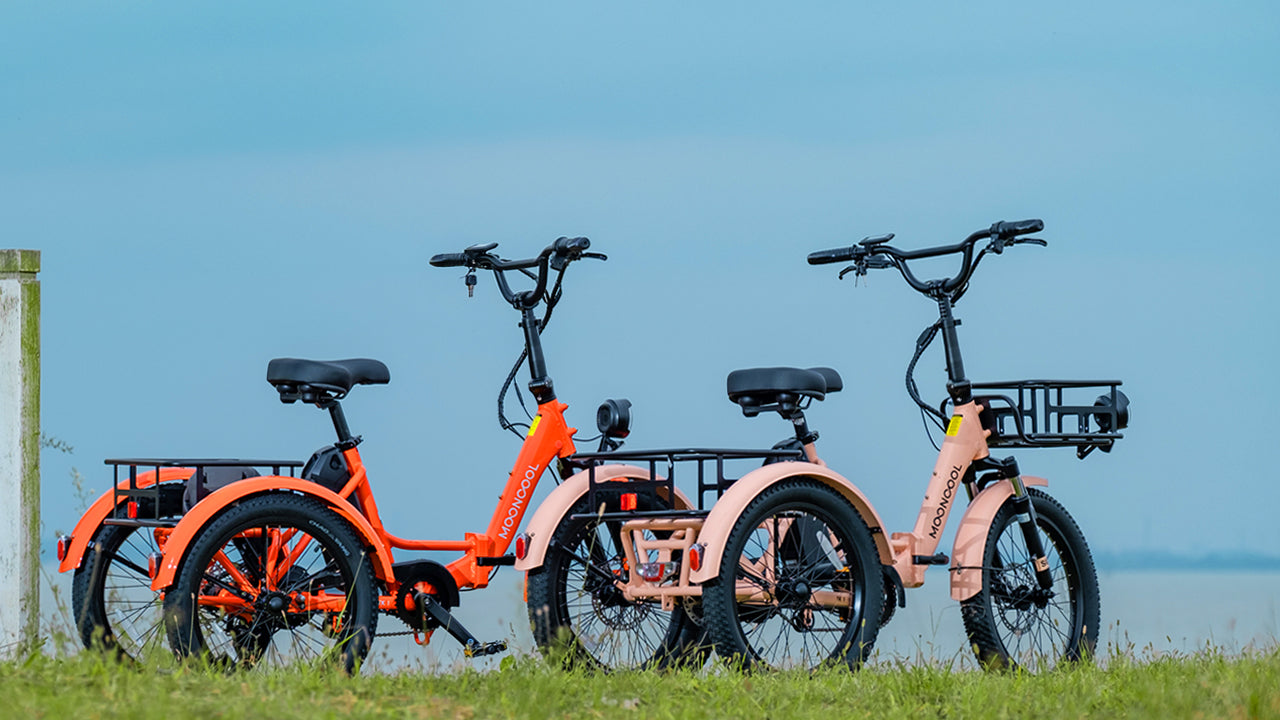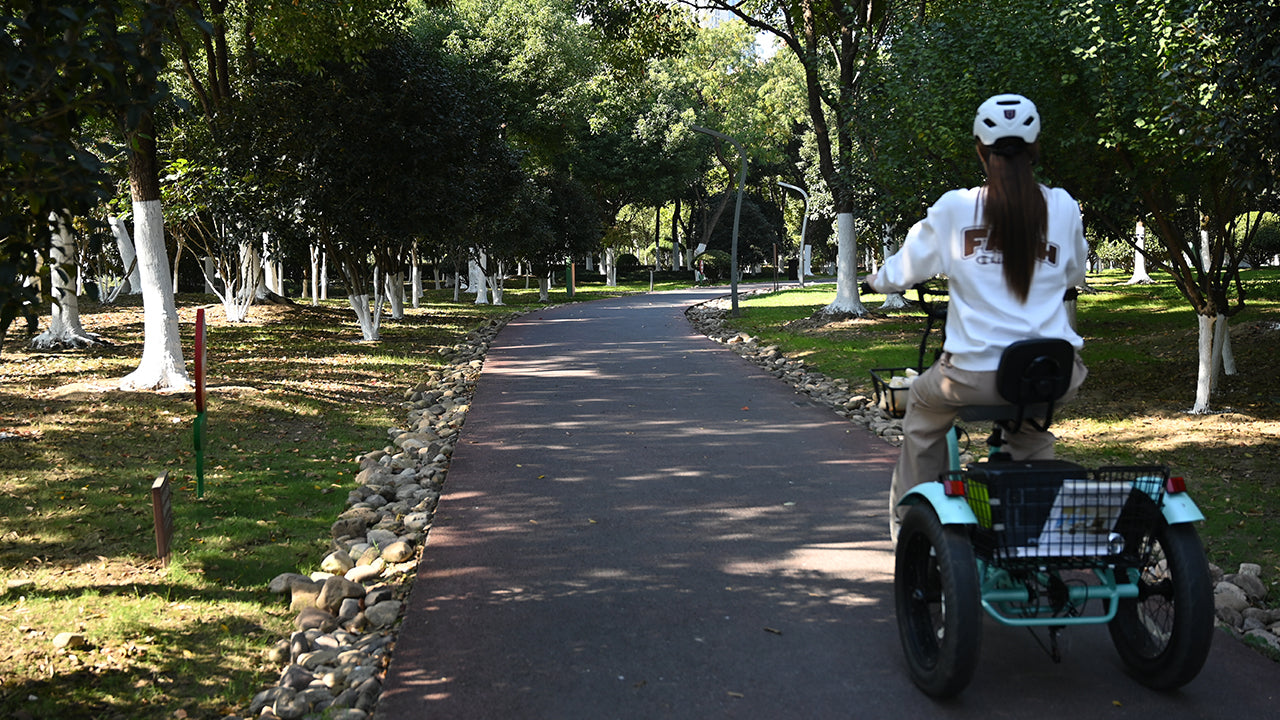Quick Answer
The average lifespan of an electric trike is 5-8 years, with high-quality models lasting 10+ years with proper maintenance. An e-trike's longevity depends on the durability of key components like the battery, motor, frame, tires, and electronics. Regular upkeep like recharging batteries, checking tire pressure, testing brakes, washing the trike, lubricating parts, and doing annual tune-ups can maximize lifespan.
Introduction
Electric trikes, also known as e-trikes, have become a popular mobility solution for seniors in recent years. With three wheels for stability, an electric pedal assist to reduce effort, and easy step-through frames, e-trikes enable older adults to get around.
But how long can you expect an e-trike to last with regular use? What factors impact the lifespan of an e-trike? Here, we'll explore the key components that determine longevity, proper care and maintenance tips, and what to look for if you're a senior considering an e-trike purchase.
Estimated Overall Lifespan
With regular maintenance and care, most quality e-trikes will last approximately 5-8 years before requiring significant repairs or replacement. Higher-end e-trike models made with durable materials and weather-resistant electrical components may last 10 years or longer if properly maintained. The lifespan can vary based on the quality of the model and how well it is cared for. If used frequently or subjected to harsh conditions, an e-trike may start to show wear and tear sooner and have a shorter lifespan.
Key Factors That Impact E-Trike Longevity
An e-trike is made up of various components, each with their own lifespan. Certain parts will require replacement more frequently than others. Below are the key factors that affect overall electric trike longevity:
- Battery: The popular lithium-ion batteries in e-trikes typically need replacement every 3-5 years or after 500-1000 charges. As the power source, battery lifespan greatly impacts e-trike performance and efficiency. Usage, charging habits, and chemistry determine battery life.
- Motor: With preventative maintenance, e-trike motors operate efficiently for 10+ years. As the heart converting electricity into propulsion, premature motor failure from strain, overheating, or overloading severely shortens e-trike life.
- Electronics: Lasting approximately 5-10 years, electronics control e-trike functions but are vulnerable to weather and moisture damage. As the e-trike's brain, deteriorating electronics negatively affect overall longevity.
- Frame: Aluminum or steel frames can endure 15+ years with care. As the skeleton holding components, low-quality frames rust faster, compromising structural integrity and shortening lifespan.
- Wheels & Tires: Needing replacement every 1-2 years from friction wear, tire quality directly impacts ride, safety, and lifespan. Quality tires uphold both performance and longevity.
-
Brakes: Hydraulic and cable brakes working 5+ years with maintenance are essential safety components. Brake wear from wet conditions can reduce e-trike reliability and user safety over time.

An e-trike is a complex machine - the synergy of various components working in harmony. With diligence and pride in ownership, your e-trike can remain your trusted companion, mile after mile, year after year.Explore more maintain tips: Traveling With Your Electric Trike: Tips for Transport, Storage, and Vacation Planning
7 Practices that Shorten Your E-Trike's Life
An e-trike can be a lasting mobility investment - but only with proper care and conscientious usage. Certain detrimental habits can prematurely cut short your e-trike's lifespan. Being aware of these risk factors allows you to avoid them and take proactive steps to prolong your trike's vitality.
Here are actions to avoid if you want to maximize how long your e-trike lasts:
- Insufficient cleaning - Allowing dirt, debris, salt, and moisture to build up on the frame, motor, and electronics leads to corrosion and system damage over time.
- Improper storage - Storing the e-trike outside exposed to weather elements instead of in a garage or shed reduces lifespan.
- Overloading - Exceeding the weight capacity strains the motor and frame can lead to early wear and failure.
- Poor charging practices - Fully depleting the battery between charges, inconsistent charging, and exposing the battery to extreme temperatures will shorten its usable life.Explore scientific charging ways: Everything you need to know about e-bike batteries [from a battery engineer]
- Harsh riding - Frequent hard braking, riding off curbs, and exceeding the max speed apply excessive stress on components.
- Lack of maintenance - Neglecting regular tire pressure checks, brake adjustments, chain lubrication, and other maintenance tasks increase mechanical wear.
- DIY repairs - Improper repairs done by non-professionals can cause more harm than good and lead to bigger problems down the road.
While an e-trike encourages adventure and freedom, remember it is a machine requiring meticulous care. An ounce of prevention now saves great hardship later. A diligent rider and a quality e-trike are partners on the open road - together, you will go far.
Caring for Your E-Trike: Tips for Senior Riders
Taking proper care of your e-trike and performing regular maintenance checks will go a long way toward maximizing its longevity. Here is a checklist of important maintenance tasks for seniors:
- Inspect tire inflation and tread wear before each ride.
- Check brakes for proper operation and pad wear each month.
- Test all lights and signals to ensure proper functioning.
- Keep the battery charged between 40-80% when not in use.
- Wash and clean the entire trike every couple of months.
- Check and lubricate all fittings and joints twice a year.
- Inspect frame and mounts for any cracks or damage annually.
- Replace tires every 1-2 years, depending on wear.
- Have annual tune-ups done by a qualified technician.
- Recharge the battery after every ride; replace it every 3-5 years.
Proper e-trike maintenance requires regular inspections, upkeep of vulnerable components like the battery, and prompt replacement of any worn parts. And the effort pays off with an e-trike that can maintain safe operation and provide years of enjoyment.

Conclusion
An electric trike can be a life-changing investment for seniors seeking lasting mobility and independence. With quality craftsmanship and attentive care, it will endure for years as a reliable companion. Consider your e-trike a partner on your journeys, brought to life by your energy and spirit. Nurture its components and respect its needs, as you do your own wellbeing. This is the true lifespan of an e-trike-measured not in years, but in memories made possible by personal freedom.
Q&A
Q1: How do I know if my e-trike battery needs to be replaced?
Signs include reduced range per charge, longer charging times, swelling/bulging, and error messages from the battery management system.
Q2: Should I charge my e-trike battery after every ride?
Yes, you should fully recharge the battery after each use to maximize its lifespan and performance.
Q3: What happens when the e-trike battery dies?
The motor will stop propelling the e-trike forward once the battery is fully depleted. You'll have to pedal manually or walk the trike home.
Q4: What is the most common problem with e-trikes?
Flat tires or low tire pressure are one of the most common issues. Batteries, brakes, chains, and electronics failing are other common problems.
Q5: Do e-trikes break down a lot?
With routine maintenance, a quality e-trike should be fairly reliable. Lack of care will lead to more breakdowns. The battery and tires tend to cause the majority of issues over time.







Leave a Comment
This site is protected by hCaptcha and the hCaptcha Privacy Policy and Terms of Service apply.